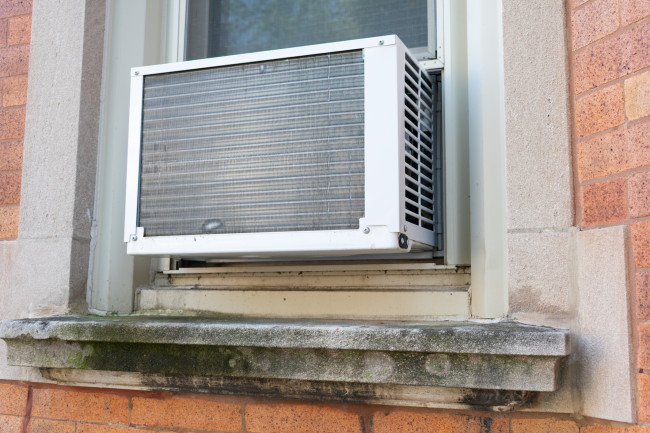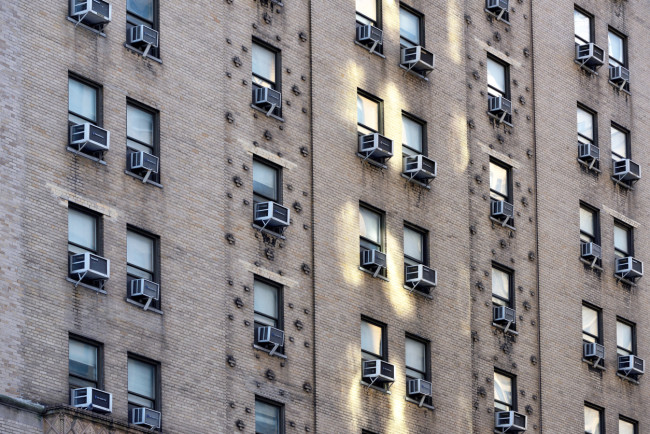Yes, you can install central AC in your own co-op or condo apartment. Here's how
- You'll need to submit plans to your property manager and board and get the permits from the DOB
- Mini-splits are easier to install than ducted systems unless you're doing a gut renovation
- The average cost to cool a 1,500-square-foot unit runs $20,000 to $30,000 and takes only a few days

Wall-mounted mini splits are more likely to be approved by a co-op or condo board.
iStock
Have you finally decided to throw in the towel on surviving another summer in New York City without proper air conditioning? When temps soar past 90 degrees, those window units just don't pass muster—and are likely dripping buckets on the sidewalk below.
The question is whether your co-op or condo board allows individual owners to install central AC or ductless mini-splits in their units. And the answer seems to be increasingly yes.
“With the range of products and installation methods available, more and more buildings are open to in-unit central air," says Lisa K. Lippman, a broker at Brown Harris Stevens. In her experience, even “co-ops are becoming more receptive, and those that are not are potentially making a big mistake.”
The HVAC contractors Brick spoke to confirmed that they have seen an uptick in co-op and condo business this year compared to previous years, too.
For sure, the technology keeps improving, allowing for more flexibility in getting the right equipment for your situation. Read on to learn about the available options and what you can expect to pay so you don't have to sweat the details—or another heat wave.
What are the different types of AC systems?
Just like in a brownstone, you have two basic options: ducted splits, aka central air, and mini splits, which can be ducted or not.
With central AC, a single air handler pumps cooling (and heating) via extensive ductwork throughout the apartment; the handler is usually housed in a mechanical closet. This type of system is only practical when you are doing a gut renovation or apartment combination since it requires opening up the walls, according to George Wong, owner of Mr. Air NYC.
In a mini-split system, the units are either wall-mounted (box on the wall), floor-mounted (similar to a steam radiator), or in the ceiling (with a grille), Wong explains, adding that these are all ductless and easy to install. "You can also have a slim-profile ducted mini-split system where you only see a diffuser, but this too is usually reserved for when you are undergoing construction, as it is a more invasive installment."
Victor Belavus, general manager of 212 HVAC, notes that mini splits always require an outside condenser that can go on the side of the building or on a patio, balcony, or the roof; there are also through-wall condensers.
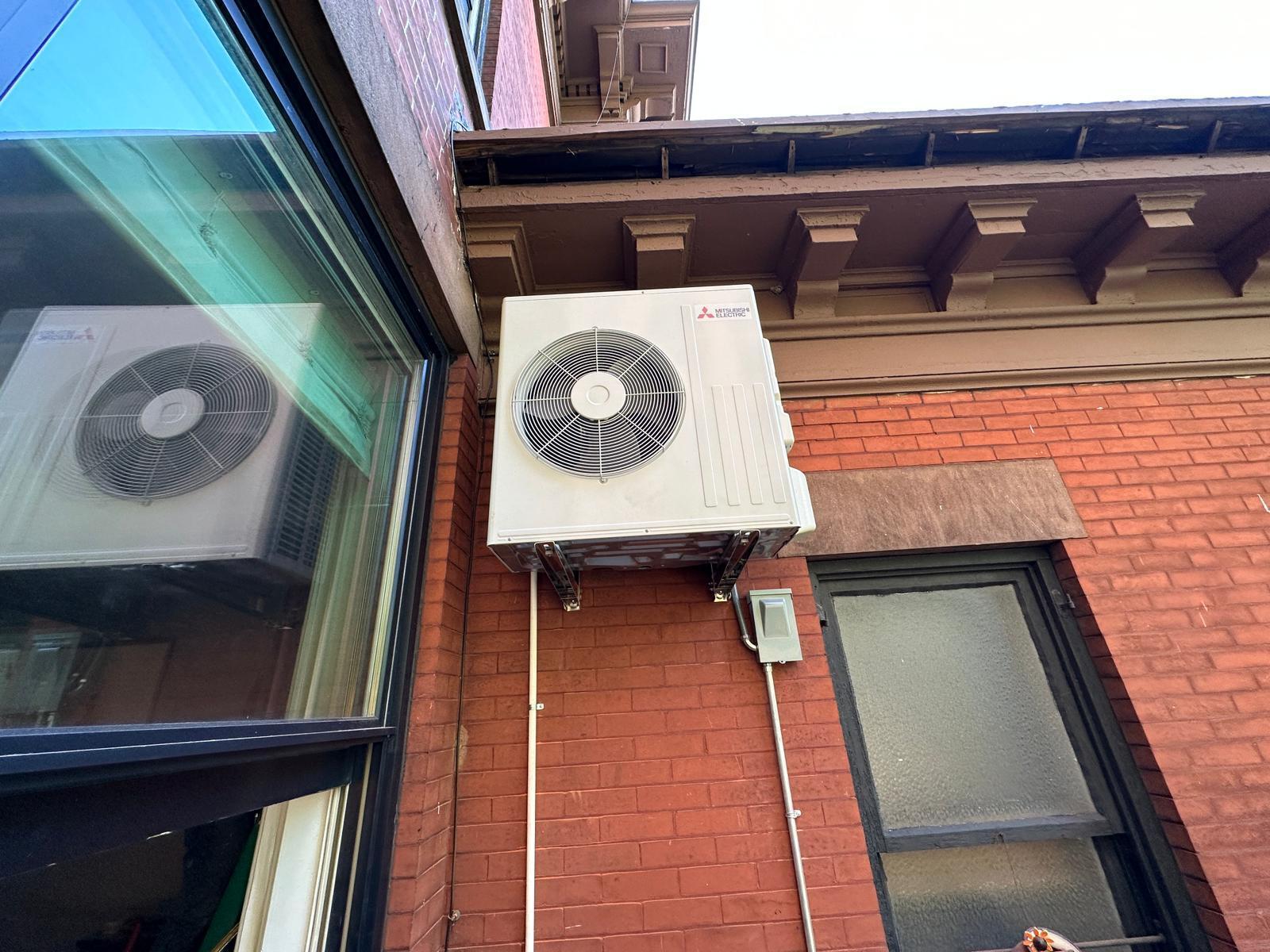
How do you know what your building allows?
Your first step is to check your proprietary lease or alteration agreement to determine whether anything is explicitly allowed or not in your building. Boards can restrict the number of through-wall AC units, for example, or require approval of any plans for other types of systems—especially since they impact the electrical load of the building.
"The first thing an owner living in a condo or co-op needs to do is to request a list of requirements from the management company," Belavus says. "Some buildings require that you hire a mechanical engineer prior to installation, some only require schematic drawings and design. We provide both."
And Wong says that since the city is promoting mini-split units, "most boards are more welcoming these days." So odds are you might be able to install this green alternative even when central air is prohibited.
Micah Garner, a property manager at Maxwell-Kates, says he has definitely seen an increase in condo and co-op approvals in recent years, "more so for mini-split systems because they are easier to install and have smaller condensing units than central AC, which is another consideration."
He says every building is different, "but when I see these get approved, it comes down to the availability of space—if one owner or stakeholder does it, usually all the others want to follow suit. In that way, smaller buildings are often easier." (He manages all sizes, from 15 to 150 units.)
For example, he says a larger building in Brooklyn has ample roof space for multiple condensers but plans to install solar panels there instead; the board also doesn't like the idea of having lots of condensers running along the facade. (And "the DOB is technically not supposed to approve condensers that are above alleyways where people would be walking below," but he has seen it happen.)
As for the electrical load, Garner sees even older buildings with less power being able to accommodate mini splits. "There can even be an energy saving by replacing four window ACs with just one mini split." He cites noise reduction as another reason boards may decide to approve the upgrade.
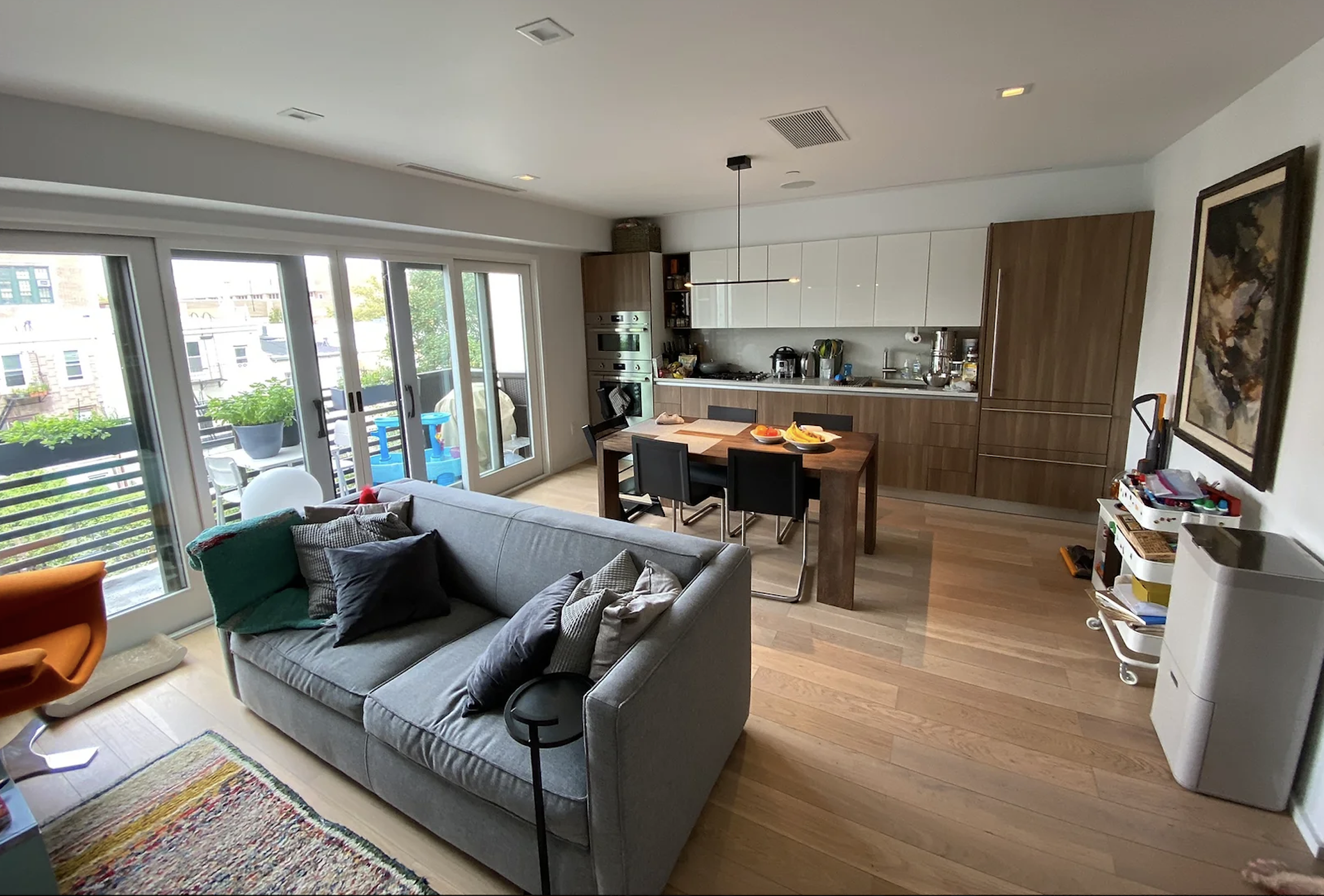
What are the pros and cons of central AC?
In most cases, you would only want to install central AC if you were already doing a gut renovation or apartment combination because of the necessary ductwork that has to happen above the ceiling and behind the walls. "We work together with the home owner, architect, and general contractor to lay out the design," Wong says.
If that describes your situation, and you have a spare closet or pantry to house the mechanicals, central AC will result in the most seamless outcome—with no boxes hanging on the wall.
You'll need high-enough ceilings, too: "Ducted systems require ceilings that are at least nine feet high, which allows us to install a central plenum (soffit) throughout the apartment to serve all the rooms," Wong says, adding that if ceiling height is limited, a ductless mini split would be the best alternative to a ducted system.
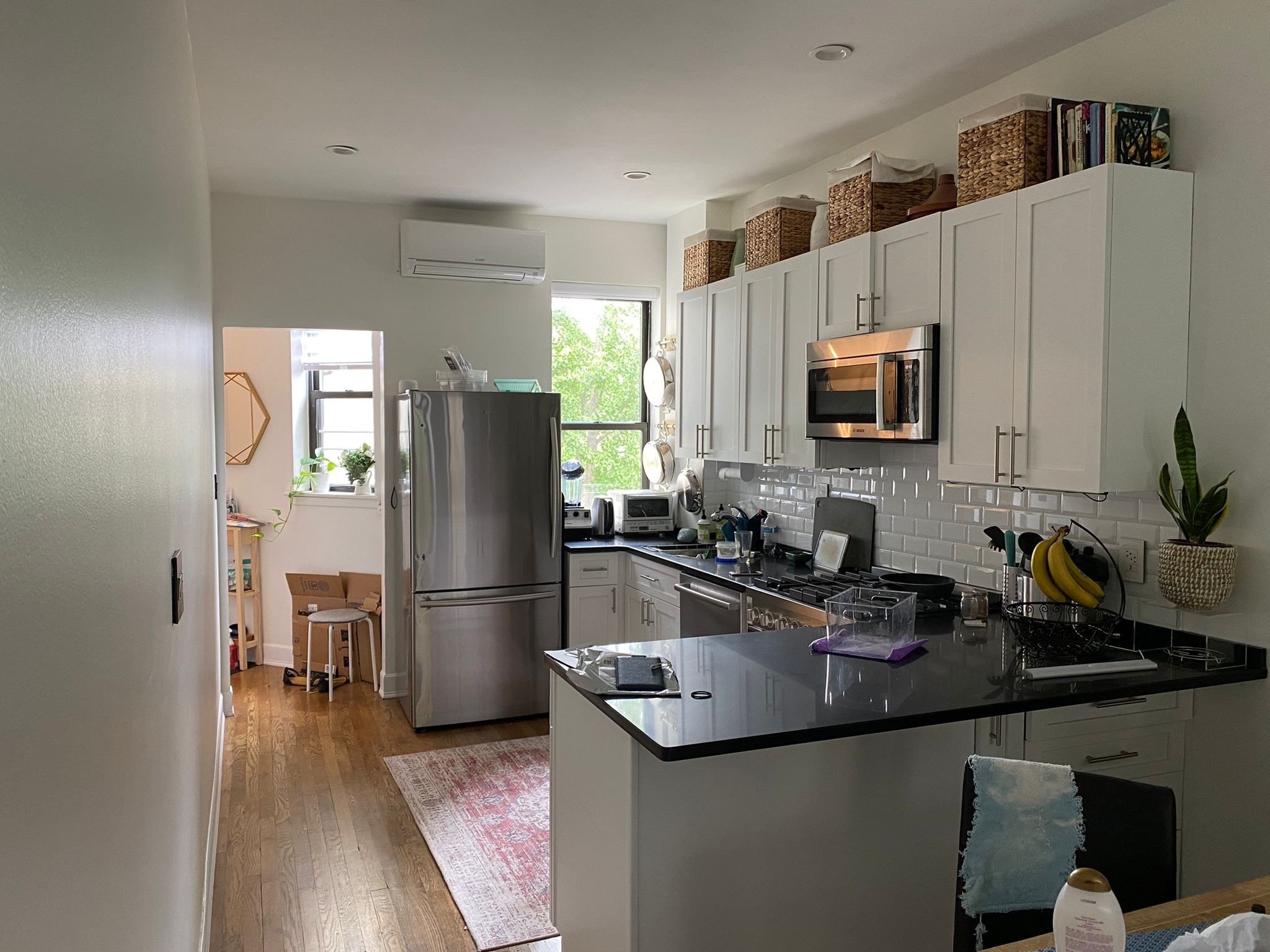
What are the pros and cons of mini splits?
For starters, mini splits can be retrofitted to suit your apartment without needing to rip out walls and deal with all the dust and disruption (unless you are already renovating, in which case you may still want to go for central air).
"A mini-split system allows for simple to very custom architectural installation," Wong says, adding that it can be installed in a single room or the whole apartment. "Our specialist will discuss and design a system to fit in the apartment based on the client's desired look and comfort needs."
Another major pro is multi-zone climate control: "Each room with a mini split can be set to its own temperature, whereas with central AC, each room would have to be set to the same temperature," Wong explains. For example, you can set the mini split to 65 degrees in a sunny room and the unit in a shadier room to 75 degrees.
Then there's the eco-friendly factor: "These systems use a non-ozone-depleting refrigerant, therefore they have less impact on the environment and contribute to clean energy initiatives," Wong points out. They are also much less noisy than through-wall air conditioners, which besides emitting sound, allow street noise to enter the apartment along with air pollution and outside odors.
"When we install mini splits, we remove the through-wall air conditioner and seal the opening," Wong says. "The quality of life inside the apartment is night and day."
And ductless mini splits use heat-pump technology, meaning they can be used as a primary source of heat for your apartment. "The system can be designed to run in temperatures as low as -13 degrees," Wong says. So this helps reduce fossil fuel emissions from gas- or oil-powered heating systems, though of course the building will still be supplying heat from the usual boiler (at least until they have to reach net-zero emission standards).
Now for the only downside: You may not like looking at those boxes on the wall. There's not much you can do about them, though Wong says lots of clients like to do recessed ceiling cassettes, which are installed inside the ceiling between the floor joists "and are therefore less noticeable, which makes them very appealing." Or you could hide floor-mounted units behind a decorative cover.
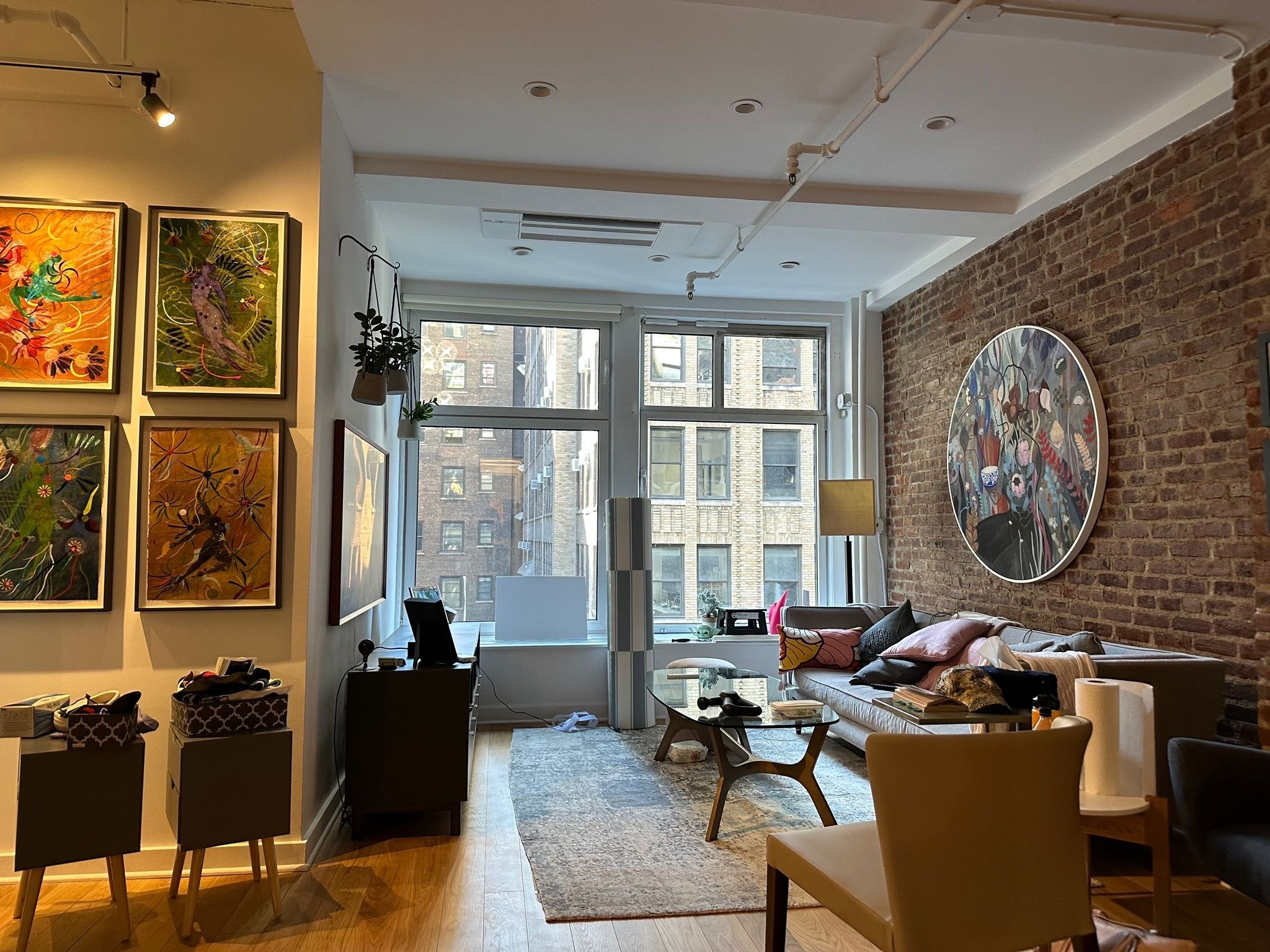
Your HVAC provider can also work with your architect or contractor to hide a mini split unit inside a closet with a dropped ceiling and then run ductwork through the joists to nearby rooms since you only need about six inches compared to 10 inches for central AC. It's less invasive than with central air, but you'll still need to rip open the sheetrock or plaster.
How much does it cost?
In general, the cost to install central AC or mini splits is about the same when everything is tallied up (there's more labor involved in the former and potentially higher equipment costs in the latter).
Belavus puts the average cost to cool a 1,500-square-foot apartment between $20,000 to $25,000.
"Each apartment is different in construction and layouts," Wong says. "We would perform a cooling and heating load calculation to determine the proper sizing for the space."
For example, he says an open-layout, 1,000-square-foot studio can be cooled with a single-wall mini split for roughly $6,000 to $7,500, whereas a 1,500-square-foot three bedroom would require a unit in each room and cost $24,000 to $30,000.
If you are going with a mini-split system, the price will also depend on whether the condenser will be installed on the roof, which is basically your only option in a landmarked building. That can add $2,000 for a crane to do the hoisting and a few extra grand for DOB filing fees.
Both Wong and Belavus say that one condenser is usually enough to power multiple mini splits in single-floor apartments, and that these are usually installed directly outside the unit, either on the facade or a balcony.
How long does it take?
The actual installation of central AC or a mini-split system can be completed in a few days, even for a duplex.
But your board will require that you get all the proper permits and insurance for the job, "which is very standard and can take one to two months. Our suggestion is to get the process started early so you can install at the desired time," Wong says.
Will it help with resale value?
At least when it comes to central AC, the answer appears to be a solid yes.
Scott Harris, a broker at Brown Harris Stevens, says he has worked with buyers who absolutely would not buy an apartment if they couldn't install central AC. “When someone is spending more than $2 million for an apartment (or even less), they expect a certain amount of basic luxury, central AC being one of them.”
Lippman agrees: “People are obsessed with central air; it can literally be the difference of 10-20 percent in a property’s price." That's particularly true for properties over $4 million. "If you are not able to put in central air, it could be the difference between a buyer moving forward or walking away.”
And if you own an investment condo, central air will allow you to compete with new developments—or you could opt for easier-to-install mini splits, which is what many multi-family brownstone owners put in their rental units.
Either way, there's no downside to providing cool relief for the sweltering summer heat.
You Might Also Like


















